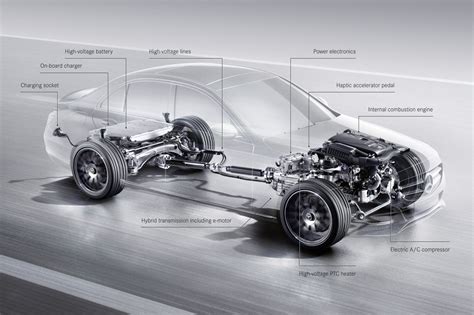The automotive industry has witnessed significant advancements in recent years, with a focus on improving vehicle performance, efficiency, and sustainability. One crucial component that plays a vital role in enhancing vehicle performance is the axle. In this article, we will delve into the world of axle technology, exploring its evolution, types, and the future of vehicle performance.
Understanding Axle Technology

Axle technology refers to the design and development of axles, which are critical components in vehicles that transmit power from the engine to the wheels. The axle is responsible for supporting the weight of the vehicle, withstanding stress and strain, and enabling smooth rotation of the wheels. Over the years, axle technology has undergone significant transformations, driven by the need for improved performance, efficiency, and sustainability.
Types of Axles
There are several types of axles used in vehicles, each with its unique characteristics and advantages. Some of the most common types of axles include:
- Live Axle: A live axle is a type of axle that is connected to the wheels and transmits power from the engine. It is commonly used in rear-wheel-drive vehicles.
- Dead Axle: A dead axle, on the other hand, is not connected to the wheels and does not transmit power from the engine. It is typically used in front-wheel-drive vehicles.
- Semi-Floating Axle: A semi-floating axle is a type of axle that combines the features of live and dead axles. It is commonly used in rear-wheel-drive vehicles.
- Full-Floating Axle: A full-floating axle is a type of axle that is not connected to the wheels and is designed to withstand heavy loads. It is commonly used in heavy-duty trucks and buses.
Advancements in Axle Technology

The automotive industry has witnessed significant advancements in axle technology in recent years. Some of the notable advancements include:
- Lightweight Materials: The use of lightweight materials such as aluminum and carbon fiber has reduced the weight of axles, resulting in improved fuel efficiency and reduced emissions.
- Advanced Manufacturing Techniques: The use of advanced manufacturing techniques such as 3D printing and CNC machining has enabled the production of complex axle designs, resulting in improved performance and efficiency.
- Electrification: The increasing adoption of electric vehicles has driven the development of advanced axle technologies, such as electric axles and hybrid axles.
- Autonomous Vehicles: The development of autonomous vehicles has driven the need for advanced axle technologies, such as steer-by-wire and brake-by-wire systems.
Benefits of Advanced Axle Technology
The advancements in axle technology have resulted in several benefits, including:
- Improved Performance: Advanced axle technology has resulted in improved performance, including increased acceleration and faster lap times.
- Increased Efficiency: Lightweight materials and advanced manufacturing techniques have resulted in improved fuel efficiency and reduced emissions.
- Enhanced Safety: Advanced axle technology has resulted in improved safety, including reduced risk of accidents and improved stability.
- Increased Sustainability: The use of lightweight materials and advanced manufacturing techniques has resulted in reduced waste and improved sustainability.
The Future of Axle Technology

The future of axle technology is exciting, with several trends and technologies expected to shape the industry. Some of the notable trends and technologies include:
- Electrification: The increasing adoption of electric vehicles is expected to drive the development of advanced axle technologies, such as electric axles and hybrid axles.
- Autonomous Vehicles: The development of autonomous vehicles is expected to drive the need for advanced axle technologies, such as steer-by-wire and brake-by-wire systems.
- Advanced Materials: The use of advanced materials such as graphene and nanomaterials is expected to result in improved performance and efficiency.
- Artificial Intelligence: The use of artificial intelligence is expected to result in improved performance and efficiency, including predictive maintenance and optimized performance.
Challenges and Opportunities
The future of axle technology is not without its challenges and opportunities. Some of the notable challenges and opportunities include:
- Increasing Complexity: The increasing complexity of axle technology is expected to result in higher development costs and increased risk of errors.
- Reducing Weight: The need to reduce weight while maintaining performance and efficiency is expected to drive the development of advanced materials and manufacturing techniques.
- Improving Safety: The need to improve safety is expected to drive the development of advanced axle technologies, such as steer-by-wire and brake-by-wire systems.
- Increasing Sustainability: The need to increase sustainability is expected to drive the development of advanced axle technologies, such as electric axles and hybrid axles.
Gallery of Axle Technology





Frequently Asked Questions
What is axle technology?
+Axle technology refers to the design and development of axles, which are critical components in vehicles that transmit power from the engine to the wheels.
What are the benefits of advanced axle technology?
+The benefits of advanced axle technology include improved performance, increased efficiency, enhanced safety, and increased sustainability.
What is the future of axle technology?
+The future of axle technology is expected to be shaped by trends and technologies such as electrification, autonomous vehicles, advanced materials, and artificial intelligence.
In conclusion, axle technology has come a long way, and its future looks exciting. With the increasing adoption of electric vehicles, autonomous vehicles, and advanced materials, the axle technology industry is expected to witness significant growth and innovation. As the industry continues to evolve, it is essential to stay informed and up-to-date with the latest trends and technologies. We hope this article has provided you with valuable insights into the world of axle technology and its future prospects.
